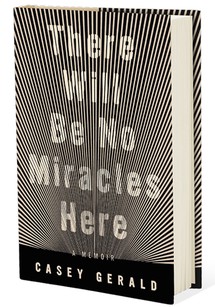There Will Be No Miracles Here
By Casey Gerald
400 pages;
Riverhead Books
There Will Be No Miracles Here (Riverhead) opens with a climactic loss of faith in a Dallas church on New Year's Eve 1999, as 12-year-old Casey Gerald waits in terror and expectation for the second coming of Christ and the end of the world. It doesn't happen. He feels foolish. It will be the first of several crises of belief.
We are immediately launched into the author's impoverished youth and its all-too-familiar particulars—addicted father, mentally ill mother, long-suffering sister—rendered in vivid, painful, and regularly funny reminiscence.
But more than anything else, this bildungsroman is a wry document of American class strata. During Gerald's earliest days at Yale, where he plays football, a dean advises him not to wear his "fitted" baseball cap around campus, as the look is so "stereotypical." She tells him, "You don't have to do that anymore."
As Gerald ascends to maneuver among the elites (gets a job at Lehman Brothers, works at a prestigious think tank, meets two presidents), he keeps the droll sensibility of someone who's felt like an interloper all his life: the gay black boy raised in the church; the Rhodes finalist who admits not finishing a single book during college; the Horatio Alger character who doesn't just wonder what his rise was for, but asks whether the rise itself, and any system that prescribes and necessitates it, is pernicious.
When a friend from college commits suicide, Gerald breaks down. He writes of "a world that subdues us ... makes us strangers to ourselves so that we can be recognizable to others." The book has no answers; it's the work of a young man searching, for the first time in his life, for the right questions.
— Dotun Akintoye


